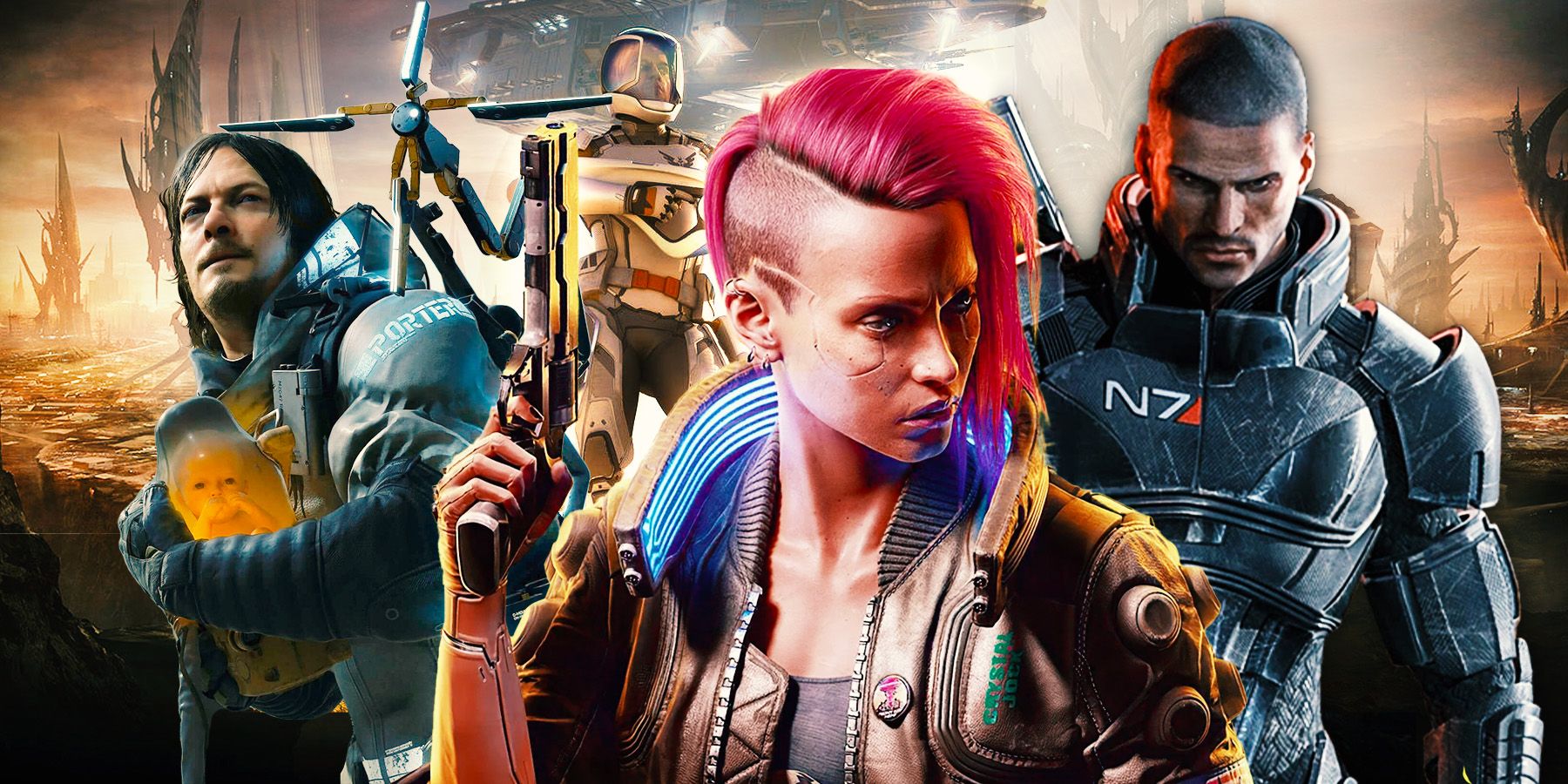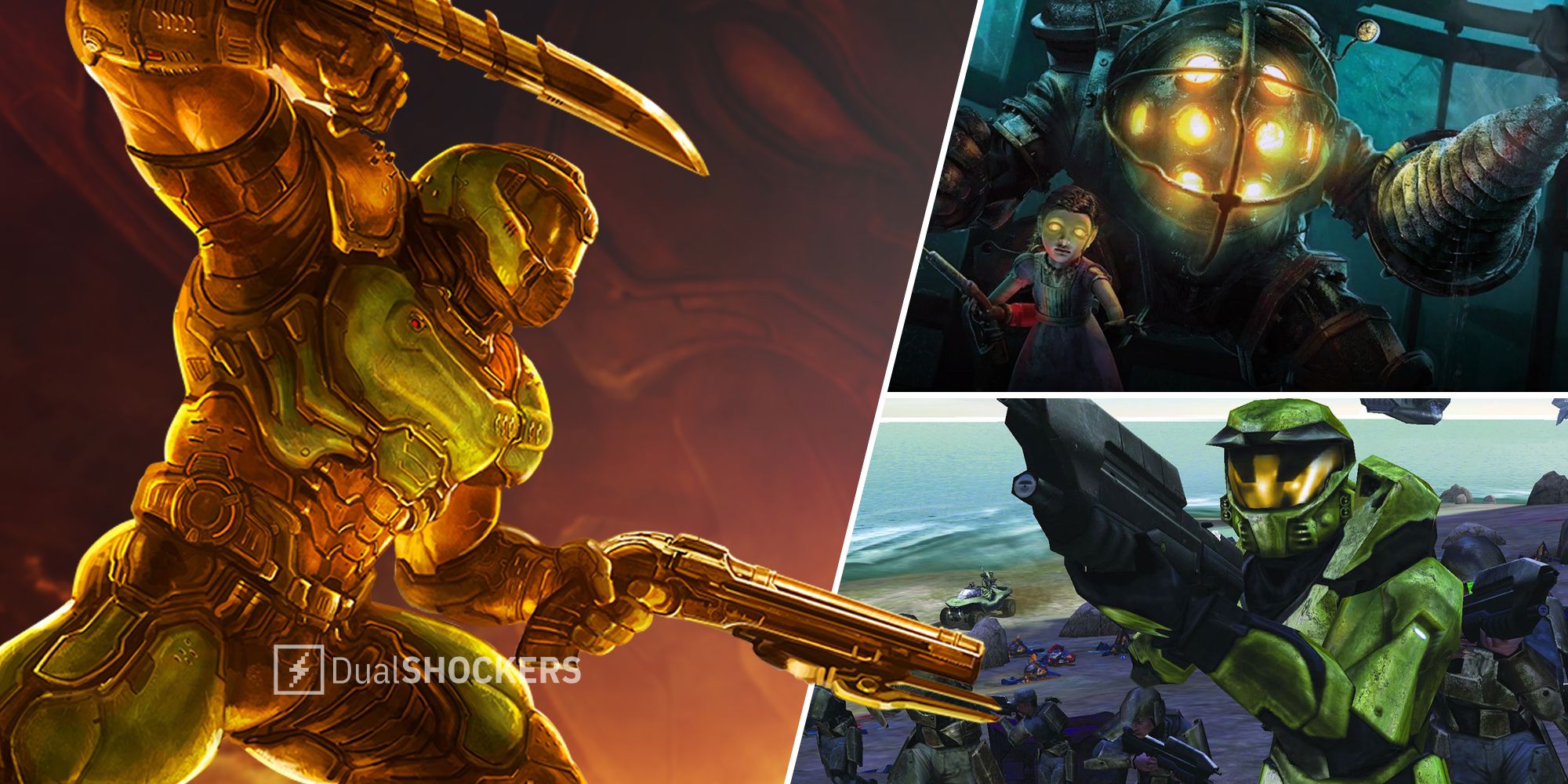
Blasting Through the Cosmos: A Deep Dive into Sci-Fi Action Games
The allure of science fiction lies in its boundless potential. It allows us to explore the uncharted territories of space, grapple with futuristic technologies, and confront moral dilemmas that reflect our own anxieties and aspirations. When combined with the adrenaline-pumping action of video games, this potential explodes into a vibrant and compelling genre: Sci-Fi Action.
From the gritty, atmospheric corridors of a derelict spaceship to the sprawling, alien landscapes of a newly colonized planet, Sci-Fi Action games offer a thrilling escape into worlds both familiar and fantastical. They empower us to become intergalactic heroes, hardened mercenaries, or even cunning anti-heroes, battling against formidable foes and shaping the destiny of entire civilizations. But what exactly makes this genre so captivating, and what are some of its defining characteristics and enduring classics?
Defining the Genre: Sci-Fi Action’s Key Ingredients
Sci-Fi Action isn’t simply about setting a game in space. It’s a carefully crafted blend of elements that contribute to a unique and immersive experience:
-
Futuristic Setting: Whether it’s a distant future, an alternate timeline, or a galaxy far, far away, the setting is paramount. It dictates the technology, the societies, and the conflicts that drive the narrative. This can range from the sleek, utopian societies of Star Trek to the dystopian, cyberpunk landscapes of Cyberpunk 2077.
-
Advanced Technology: Laser guns, energy shields, cybernetic augmentations, spaceships capable of interstellar travel – advanced technology is integral to the Sci-Fi Action experience. It provides players with unique tools and abilities to overcome challenges and engage in spectacular combat.
-
Compelling Narrative: Often exploring themes of humanity’s place in the universe, the consequences of technological advancement, and the moral implications of power, Sci-Fi Action games frequently present players with choices that impact the story and the fate of the characters involved.
-
High-Octane Action: From fast-paced gunfights and strategic melee combat to piloting futuristic vehicles and engaging in epic space battles, action is at the heart of the genre. This often involves innovative gameplay mechanics that leverage the futuristic setting and advanced technology.
-
Alien Encounters: Whether they are benevolent allies, terrifying predators, or complex civilizations with their own agendas, encountering alien lifeforms is a staple of Sci-Fi Action. These encounters often lead to conflict, cooperation, and a deeper understanding of the universe.
A History of Blasters and Beyond: Key Titles and Their Influence
The Sci-Fi Action genre has a rich history, evolving and adapting alongside advancements in technology and changing player tastes. Here’s a look at some of the landmark titles that have shaped the genre:
-
Doom (1993): While not strictly sci-fi in its initial premise, Doom’s fast-paced, demon-slaying action on Mars cemented its place as a foundational title. Its emphasis on relentless combat and visceral weaponry set a precedent for future action games.
-
Marathon (1994): Bungie’s Marathon trilogy offered a more narrative-driven experience with a focus on exploration and puzzle-solving, alongside intense first-person shooter action. Its complex story and sophisticated AI were groundbreaking for their time.
-
Half-Life (1998): Revolutionizing narrative in first-person shooters, Half-Life immersed players in the role of Gordon Freeman, a scientist caught in the middle of an alien invasion. Its seamless integration of storytelling, puzzle-solving, and action set a new standard for the genre.
-
Halo: Combat Evolved (2001): Building upon Bungie’s previous work, Halo elevated the Sci-Fi Action genre with its compelling narrative, iconic protagonist, and innovative gameplay mechanics. Its open-world environments, vehicle combat, and multiplayer modes revolutionized the console shooter landscape.
-
Metroid Prime (2002): This groundbreaking title successfully translated the 2D Metroid formula into a stunning 3D first-person adventure. Its atmospheric environments, exploration-focused gameplay, and challenging combat solidified its status as a classic.
-
Dead Space (2008): Injecting horror elements into the Sci-Fi Action formula, Dead Space created a terrifying and immersive experience. Its dismemberment-focused combat, claustrophobic environments, and psychological narrative made it a standout title.
-
Mass Effect (2007): BioWare’s Mass Effect trilogy redefined the genre with its emphasis on player choice, character development, and a vast, interconnected galaxy. Its engaging narrative, memorable characters, and tactical combat made it a landmark achievement.
-
Crysis (2007): Known for its cutting-edge graphics and innovative nanosuit mechanics, Crysis offered players a sandbox-style experience with unparalleled freedom of movement and combat. Its focus on tactical gameplay and visually stunning environments set a new benchmark for graphical fidelity.
-
Destiny (2014): Bungie’s Destiny combined first-person shooter action with MMO elements, creating a persistent online world where players could team up to complete missions, explore alien worlds, and battle against hordes of enemies.
-
DOOM (2016): A brutal and unapologetic reimagining of the classic, DOOM (2016) revitalized the franchise with its fast-paced, adrenaline-fueled combat and heavy metal soundtrack.
-
Cyberpunk 2077 (2020): Despite its initial launch issues, Cyberpunk 2077 offered a sprawling and immersive open-world experience set in a dystopian cyberpunk metropolis. Its complex narrative, intricate character customization, and diverse gameplay options have solidified its place in the genre.
Modern Trends and Future Directions
The Sci-Fi Action genre continues to evolve, embracing new technologies and exploring innovative gameplay mechanics. Some of the current trends include:
-
Open-World Exploration: Games like Starfield and Cyberpunk 2077 offer vast, open worlds to explore, allowing players to discover hidden secrets, complete side quests, and immerse themselves in the game’s lore.
-
Procedural Generation: Games like No Man’s Sky utilize procedural generation to create vast and diverse alien landscapes, offering players an almost limitless sense of exploration and discovery.
-
Emergent Gameplay: Games like Death Stranding emphasize player interaction and cooperation, creating emergent gameplay moments as players work together to overcome challenges and rebuild civilization.
-
Enhanced Realism: Games are pushing the boundaries of graphical fidelity and physics-based simulations, creating more immersive and believable Sci-Fi worlds.
-
Cross-Genre Blending: The genre is increasingly blending with other genres, such as horror (Dead Space), RPG (Mass Effect), and stealth (Deus Ex), creating unique and compelling gameplay experiences.
The Enduring Appeal of Sci-Fi Action
The Sci-Fi Action genre continues to captivate players for several reasons:
-
Escapism: It offers an escape from the mundane realities of everyday life, transporting players to fantastical worlds filled with adventure, danger, and wonder.
-
Empowerment: It allows players to step into the shoes of powerful heroes, capable of overcoming seemingly insurmountable obstacles and shaping the fate of the universe.
-
Exploration: It provides players with the opportunity to explore vast and diverse alien landscapes, discover new technologies, and encounter fascinating alien civilizations.
-
Moral Dilemmas: It often presents players with complex moral choices, forcing them to grapple with difficult questions about humanity’s place in the universe and the consequences of technological advancement.
-
Constant Innovation: The genre is constantly evolving, embracing new technologies and exploring innovative gameplay mechanics, ensuring that there is always something new and exciting to discover.
In conclusion, the Sci-Fi Action genre is a vibrant and dynamic space, constantly pushing the boundaries of what’s possible in video games. From its humble beginnings with classic titles like Doom and Marathon to the sprawling open worlds of Starfield and Cyberpunk 2077, the genre continues to offer players thrilling adventures, compelling narratives, and a glimpse into the possibilities of the future. As technology continues to advance and developers continue to innovate, the future of Sci-Fi Action gaming looks brighter than ever. So, grab your blaster, buckle up, and prepare to blast off into a universe of endless possibilities!

